(Disclaimer: This page contains affiliate links. If you make a purchase from one of the links, Habitot will earn a small commission at no extra cost to you.)
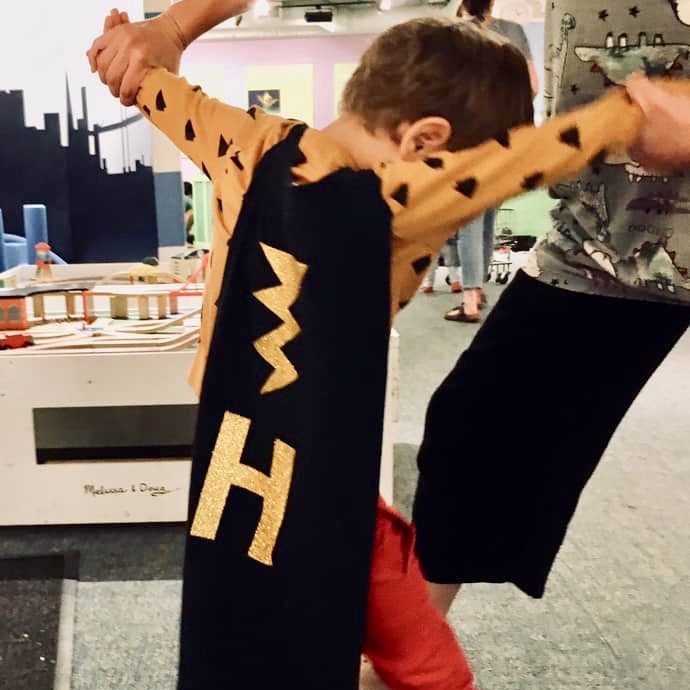
Superhero play – and any type of dramatic play – can help children build their self-esteem, overcome fears, work on social skills, and act out real life scenarios and emotions so that they can learn how to take charge of their own world. In this week’s Art-at-Home activity, you and your child can make a simple, no-sew superhero cape using materials easily found at home or in thrift shops.
What We’re Learning & Skills We’re Building
- Dramatic play – pretending to be a superhero can help build children’s self-esteem, and they can feel powerful and capable of solving problems to help others in need
- Communication – expressing ideas, needs, and emotions through pretend roles
- Gross motor skills – using the large muscles to run, jump, and climb as a superhero
- Fine motor skills – using the small muscles in the hands to hold a marker or paintbrush
- Creative expression – expressing yourself by making choices in creating your cape
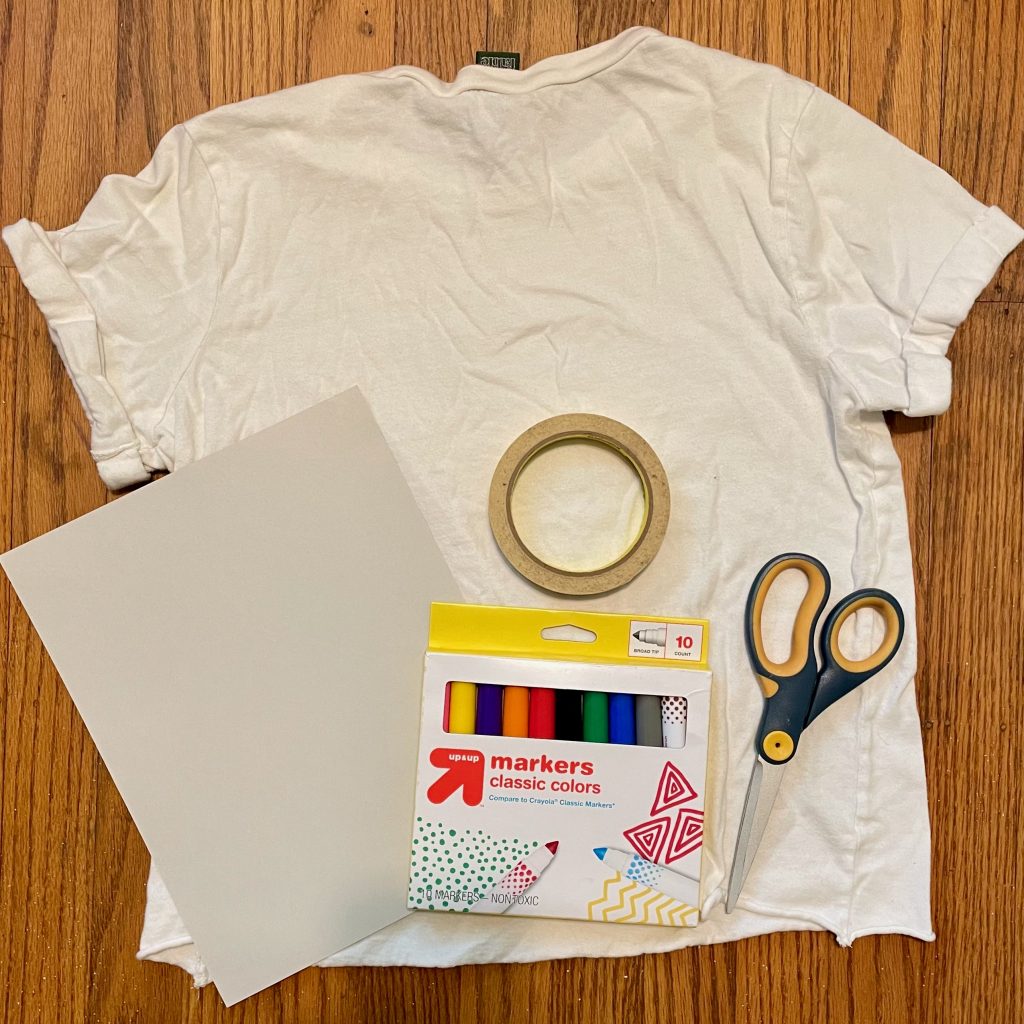
Materials
- One cotton T-shirt. (For most preschoolers, use L or XL child’s T-shirt or S or M women’s T-shirt. A larger T-shirt is ok, but you may need to trim the bottom so it doesn’t drag on the floor.)
- Adult use only: scissors that can cut through fabric and vinyl if using iron-on transfers
- Thick, permanent markers or fabric markers/pens
Optional, Decorations
- Paint (fabric paint or tempera paint) and paintbrushes
- Heavy cardstock or cardboard for stencils (Adults can cut w/ scissors or exacto knife)
- Masking tape
- Fabric glue, “cool” glue gun, or regular school glue
- Fabric scraps
- Heat transfer vinyl sheets (for making iron-on patches) and iron
Making the Cape
Note: Larger, sharper scissors work best, so adults should do the job of cutting the shirt. Children can help draw lines on the shirt where cuts are needed. Show your child how you cut along the lines.
- Step 1 Cut the sleeves off of the T-shirt.
- Step 2 Open up the side seams by cutting from each armpit to the bottom.
- Step 3 Lay the T-shirt flat with both the front and the back spread out. Leave the collar section intact while you completely cut off the front of the T-shirt, leaving the ring of the collar with just the back still attached.
- Step 4 Your child can slip the collar over their head to check the cape’s length. If it’s touching their lower calves, consider cutting the length so it hangs no lower than the back of their knees. No superhero wants to accidentally step on their cape when they’re standing up!
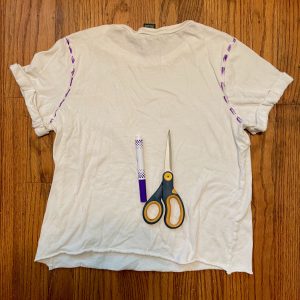
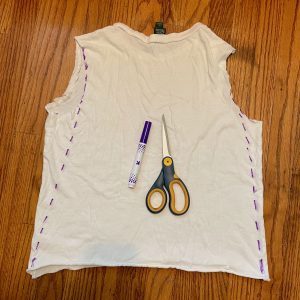
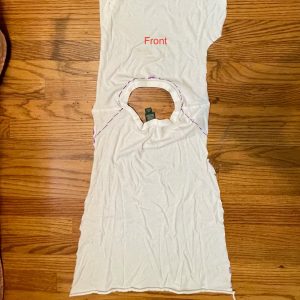
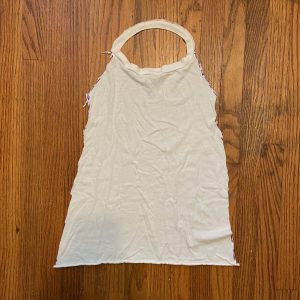
Ideas for Decorating
• Draw on the cape with markers or paint. If you use washable markers or paint, your drawing will stay on only until it is laundered. If you’d like a more permanent design, you can use fabric markers or fabric paint.
• Create a homemade stencil out of heavy cardstock or cardboard. Your child can choose or draw the design, then you can cut out the shape using scissors or an exacto knife. Place the stencil onto the cape, tape down the edges, and use a marker or paint to fill in where the shape was cut out. (Examples: first letter of your child’s name, a lightning bolt, a heart, etc.)
• Add decorative fabric scraps to the cape using fabric glue or hot glue. Regular school glue will work, but it’s not as durable and it will disintegrate when put through the wash.
• Use iron-on transfer designs as decoration. These can be found online on Etsy and Amazon or in craft stores such as Michael’s. You can make your own iron-on transfer designs by cutting out shapes from heat transfer vinyl sheets or by printing images onto heat transfer paper.
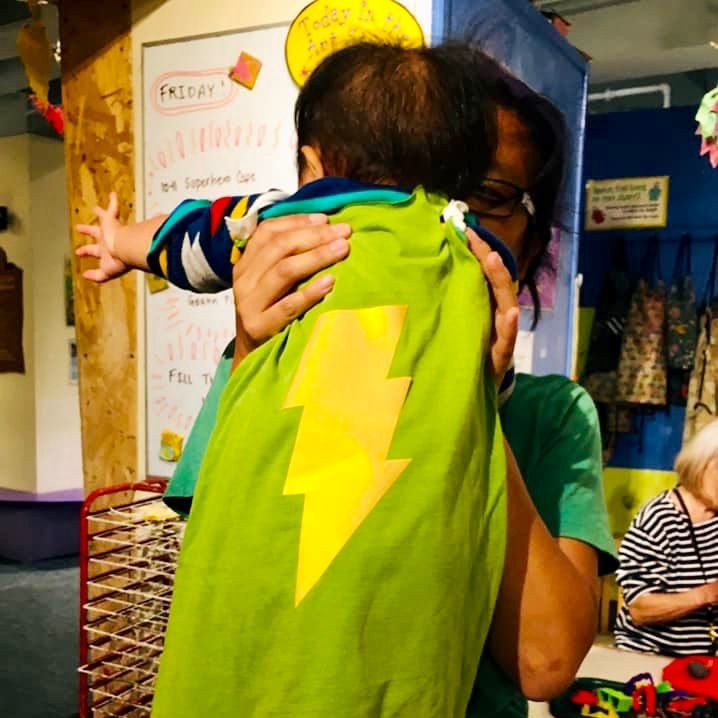
Help Your Child Become a Superhero!
- Talk about what a true superhero is. Superheroes are helpers. They rescue people, save the day, and do good deeds. Emphasize positive superhero behaviors and help guide these ideas into your child’s play.
- Tell your child that some of the action “heroes” you see in movies, TV shows, and video games are violent, and they might take actions that hurt instead of help others.
- Superhero play can help your child explore moral values and dilemmas.
- Superhero play can help spark your child’s imagination, too, and help them feel less scared about things that make them feel powerless.
Read through this article to learn more about positive superhero play.
The Importance of Dramatic Play
Young children learn many new and challenging skills, and they often feel helpless and unable to accomplish what they want to do. That’s one reason superheroes are larger than life for many young ones – they’re courageous, powerful, and seemingly able to overcome obstacles with great physical prowess while often protecting the small and weak. Early childhood educators understand that superhero play – and any type of dramatic play – helps children overcome fears, work on social skills, and act out real life scenarios and emotions so they can learn how to take control of their own worlds.

